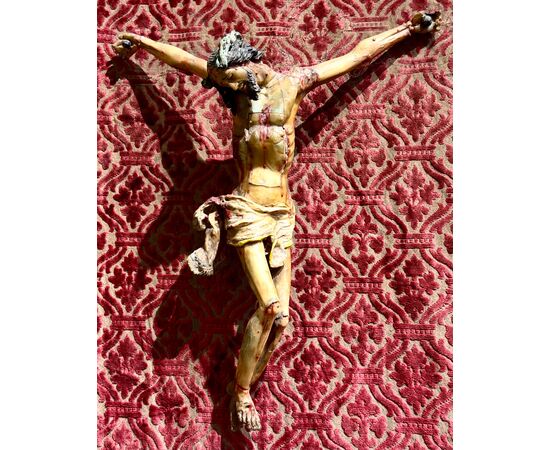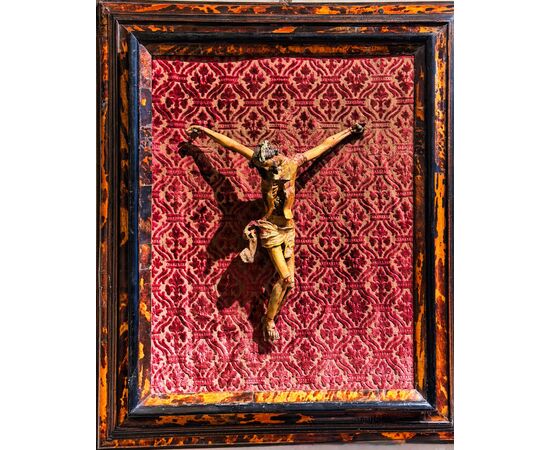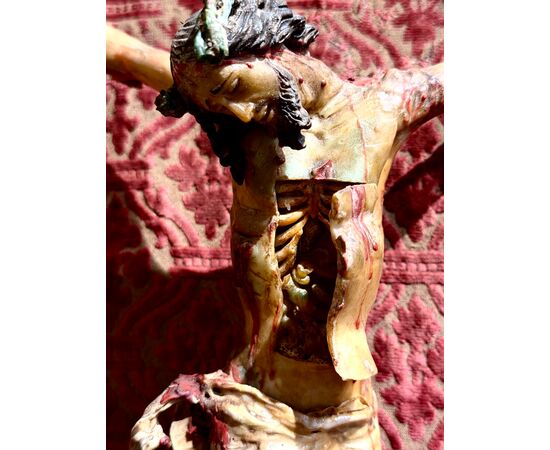Anatomical Wax Crucifix by Gaetano Giulio Zumbo 1656-1701.
The 17th-century anatomical wax crucifixes represent an important artistic and scientific expression of the time, born from the interest in human anatomy and the realistic representation of the body. These objects, often made for educational and devotional purposes, offer an intense vision of Christ's suffering, combining art and science in a single work. The rarity of these crucifixes is due both to the delicacy of the materials used—wax—and to the complexity of their creation process.
An extraordinary example is the anatomical crucifix by Gaetano Giulio Zumbo, a Sicilian artist known for his works of great realism and detail. Today, works like these can be admired in Italian and foreign museums, where they are preserved as precious witnesses to the creativity and culture of the 17th century.






